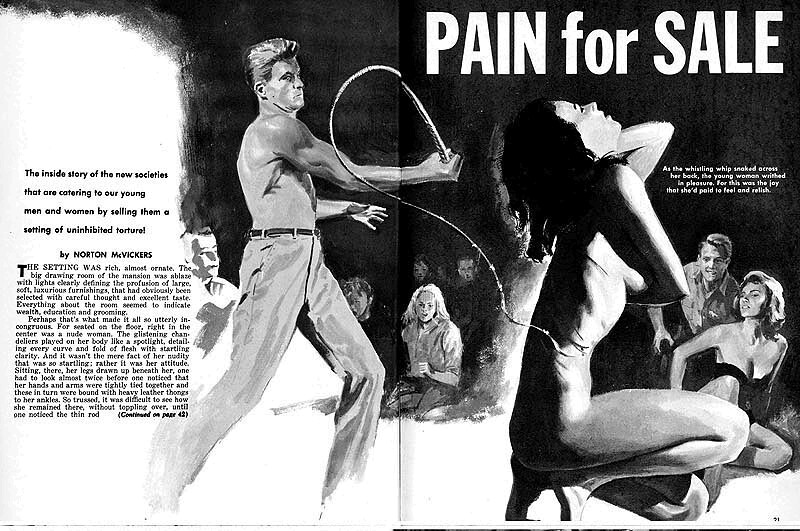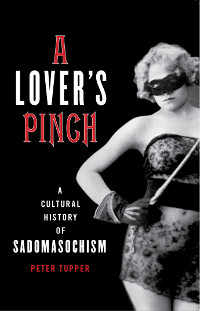Just discovered the Vintage Scans blog. Unlike some vintage blogs, the author includes source information with his/her posts, which I appreciate as a historian.
Mails, Thomas E. Sundancing: The Great Sioux Piercing Ritual Council Oak Books, 1998 Gbooks
In writing about the Sun Dance, one is tempted to being with a vivid description of the absorbing, flesh-piercing ritual. But to do so is a tragic mistake, for in focusing everything upon a single, albeit sensational, fraction of an entire and splendid religious ceremony, the overall significance of the four-day event is missed, and it is inevitable that the rest of the Sun Dance will be ignored and misunderstood — even by some Indians.
Pg.2
While working on Chapter 1 of the book, I wanted to spend a paragraph or two on the First Nations Sun Dance as an example of physical ordeals in religious practice. However, I wanted to make sure I got the details as correct as possible, so that sent me on another research trip. Sometimes you have to read a whole book just to make sure that a couple of sentences are accurate.
It’s hard to kill a myth. In meme theory, myths are often analogous to parasites: hard to get rid of, but not too harmful. Or rather, they mask their harmful effects.
In the BDSM world, there are a lot of pernicious myths that many people want to believe. (Are kinky people more prone to this kind of fantasy?) The most enduring is the myth of the Old Guard.
The blog Au carrefour étrange has a set of images from a 1922 French book of flagellation erotica.
Welcome to WordPress. This is your first post. Edit or delete it, then start blogging!
Roman sex tokens
UK newspaper the Guardian has a piece on the recent discovery of a bronze token specifically made for spending in Roman brothels in Britain.
While the Putney token has been hailed as a rare discovery from Roman Britain, such artefacts showing similar scenes were actually well known in Renaissance Italy. Scholars in the 16th century didn’t know what they were – maybe something to do with the reputed excesses of the emperor Tiberius? – but they did leap on evidence of ancient Roman erotic art. Anything from antiquity was considered noble in the Renaissance, so these “coins” (as they were misnamed) licensed saucy 16th-century art, including Giulio Romano’s famous series of pornographic illustrations I Modi.
Again, this ties into Howard Bloom’s “strong misreading” idea I talked about earlier, that this misunderstanding of a given text (the token) fertilizes more creativity.
Guest post on BDSM Book Reviews: The Archaeology of Erotica
My brief history of erotica has been posted on BDSM Book Reviews:
I would argue that the bulk of what is categorized as erotica today can be traced back to two highly influential books, one from the early twentieth century, the other from the middle, both by women, both with women protagonists being initiated into exotic realms of pleasure, both widely dismissed as sensational, pornographic, misogynistic trash.
Karen Halttunen’s “Murder Most Foul”
Halttunen, Karen. Murder most foul: the killer and the American Gothic imagination Harvard University Press, 1998 Google Books
Halttunen’s book is about the transformation of how American society handles social deviance (violent crime, particularly) from the pre-industrial to the post-industrial.
Men’s adventure magazines gallery

Retrospace has a selection of scans, and not just the covers but the interiors, of old mens adventure magazines, variously known as pulps or sweats.
You can see earlier pornographic genres embedded in here: the same combination of xenophobia mixed with wish-fulfillment in The Lustful Turk, Awful Disclosures of Maria Monk and so forth.
Davis, Tracy C. “The Actress in Victorian Pornography” in Garrigan, Kristine Ottesen. Victorian Scandals: Representations of Gender and Class Ohio University Press, 1992
It was a widespread assumption in the 19th century that actresses were whores. The actress was the most common female occupational type in pornography of the period, and some pornographic works explicitly referred to actual actresses. Actresses in turn danced on the edge of decency in see-through white dresses, body stockings and “breeches roles,” i.e. cross-dressing as men.
In the weekly serial magazines, available for as little as one penny and with circulations of hundreds of thousands, actresses were depicted in knee-length skirts, exotic Oriental harem trousers, men’s fencing costumes or breeches, intermixed with nude or semi-nude pictorials included spanking and lesbianism. The sexualization or fetishization of the costume itself is what’s at work here.
